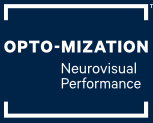
What could be causing my light sensitivity and what can I do about it?
Photophobia, or light sensitivity can have multiple causes, and many companies have filters, tints, or special glasses claiming to help. It’s important you know how to find the route cause of your photophobia, and how to treat it.
Causes:
Uveitis, Iritis, or inflammatory conditions.
The most obvious causes for photophobia (light sensitivity) are physically problems with the eye that cause the light to scatter as it passes through the eye. One of the most common is termed iritis and refers to inflammation inside the eye. If this is the cause of your light sensitivity it will be easily detected. It is most often treated with steroids, and/or treating any underlying systemic conditions. For the short term sunglasses or dark lenses can be worn, as the light sensitivity in these cases usually resolves within days to a week.
Concussion or head injury
Photophobia (light sensitivity) is common after concussion and head injury. Unless there is physical damage to the eye (causing iritis or uveitis), the light sensitivity is most often linked to problems with how the eyes and the brain work together. This could be because the eyes are not working together properly, sometimes called binocular dysfunction or binocular vision disorder, or because the brain is having trouble processing the light. Treatment options range from specialty glasses prescriptions including prism, light filters such as FL41 or blue tints, and vision therapy. It is important to see a neuro-optometrist, who specializes in testing and treating how the eyes and the brain work together.
General Photophobia
Photophobia that isn’t well explained by uveitis can often be caused by problems with how the eyes work together. It can sometimes have been there for the majority of a person's life, slowly getting worse. Other times it can seem to onset after years of working at a computer, which sometimes gets referred to as computer vision syndrome. Most often this type of photophobia presents with headaches, dizziness, screen sensitivity or with what people assume is sensitivity to blue light. Often this type of photophobia is due to problems with how the eyes are working together, and the strain that is often put on the visual system. An examination with a neuro-optometrist who specializes in this area of treatment (including prisms, filters, and vision therapy), should be able to uncover the reason why and provide solutions. Treatment often involves specialty glasses that improve efficiency (and reduce symptoms), filters (such as Fl41) and vision therapy (to improve how the eyes and the brain work together).
Treat the reason it’s happening
In any case of photophobia or light sensitivity, the most important part is treating the underlying condition that is causing the photophobia. Cases of inflammation like uveitis should be seen by your optometrist or ophthalmologist in order to diagnose via slit-lamp examination and treat with steroids or other medication. If this has been ruled out, it is important to see a neuro-optometrist who specializes in vision therapy, specialty glasses prescriptions (including Fl41 and other tints), and tinted lenses. This way you can get to the root of the problem and see improvements.
